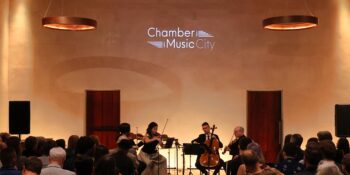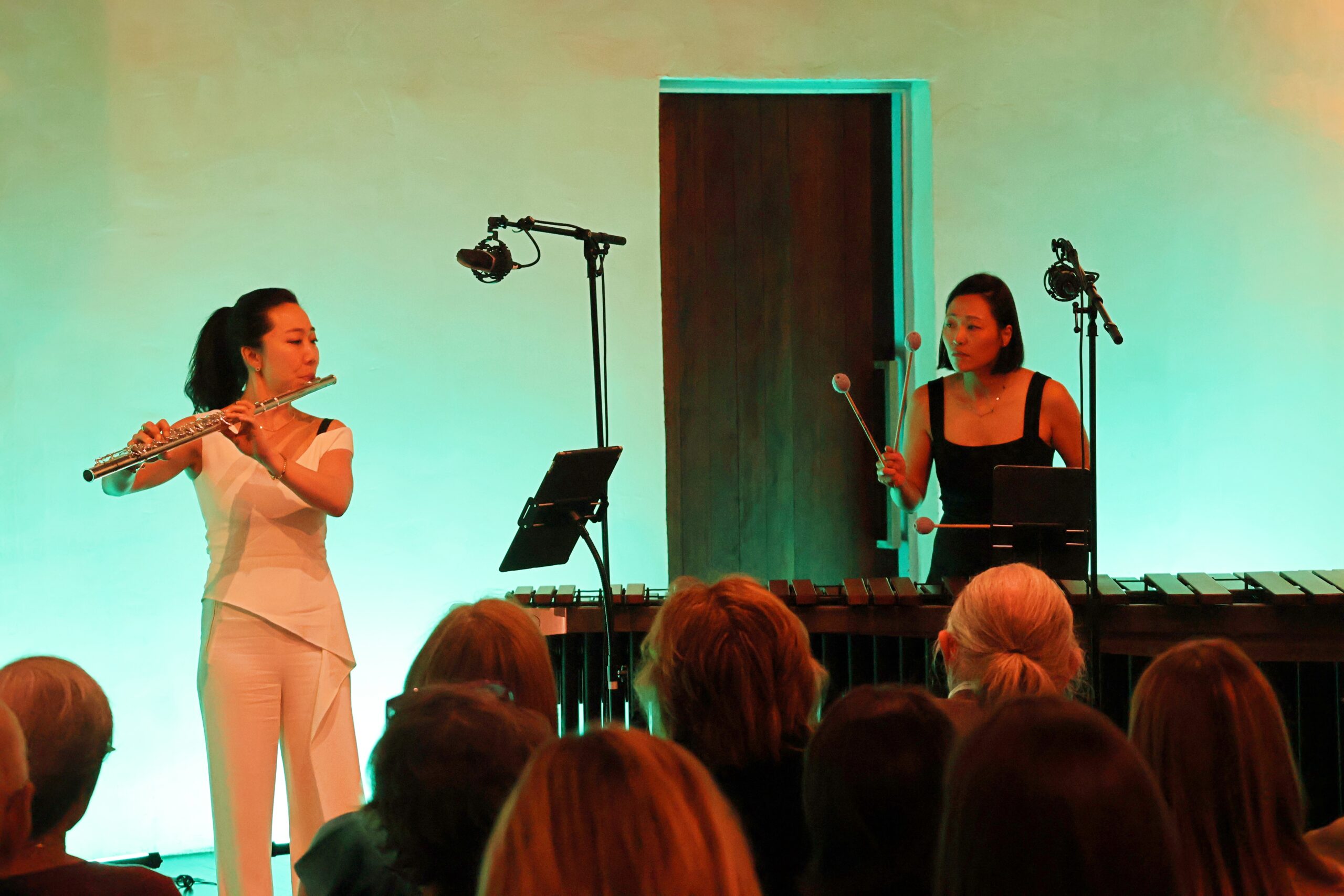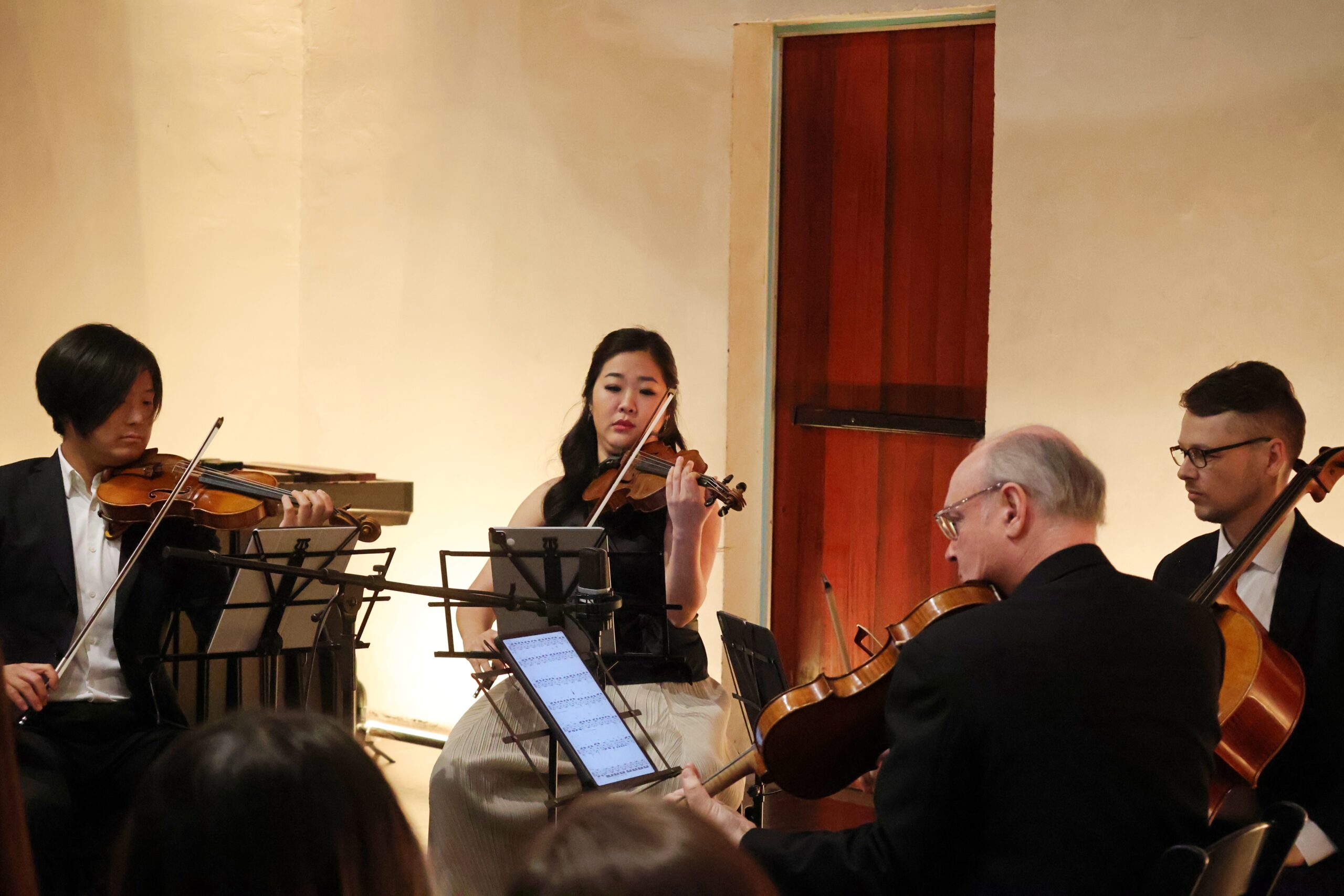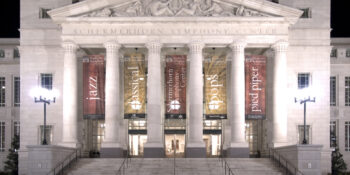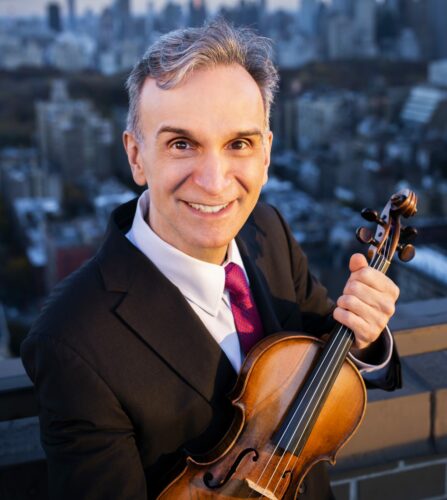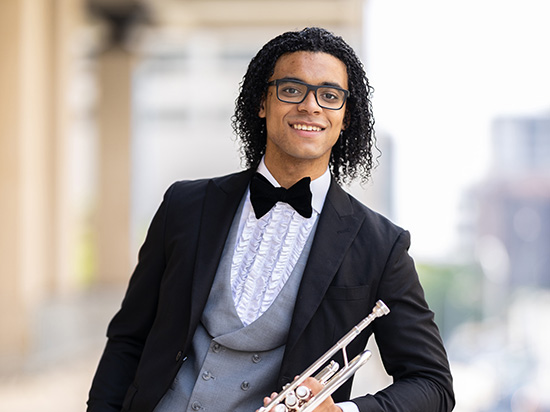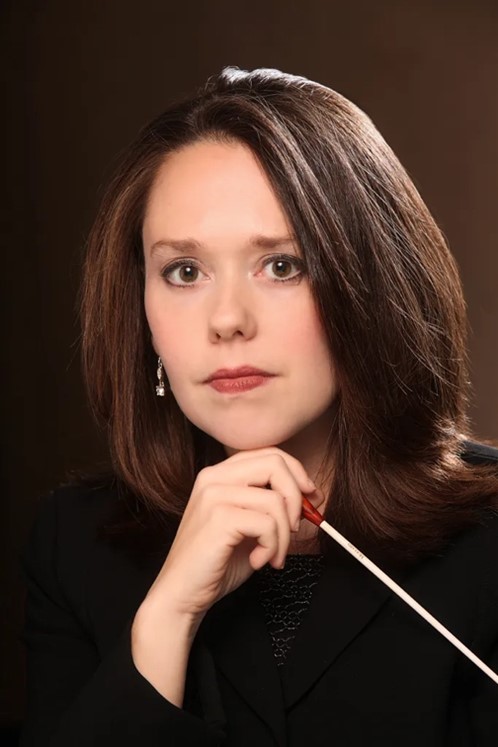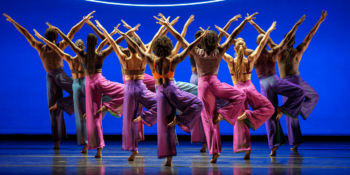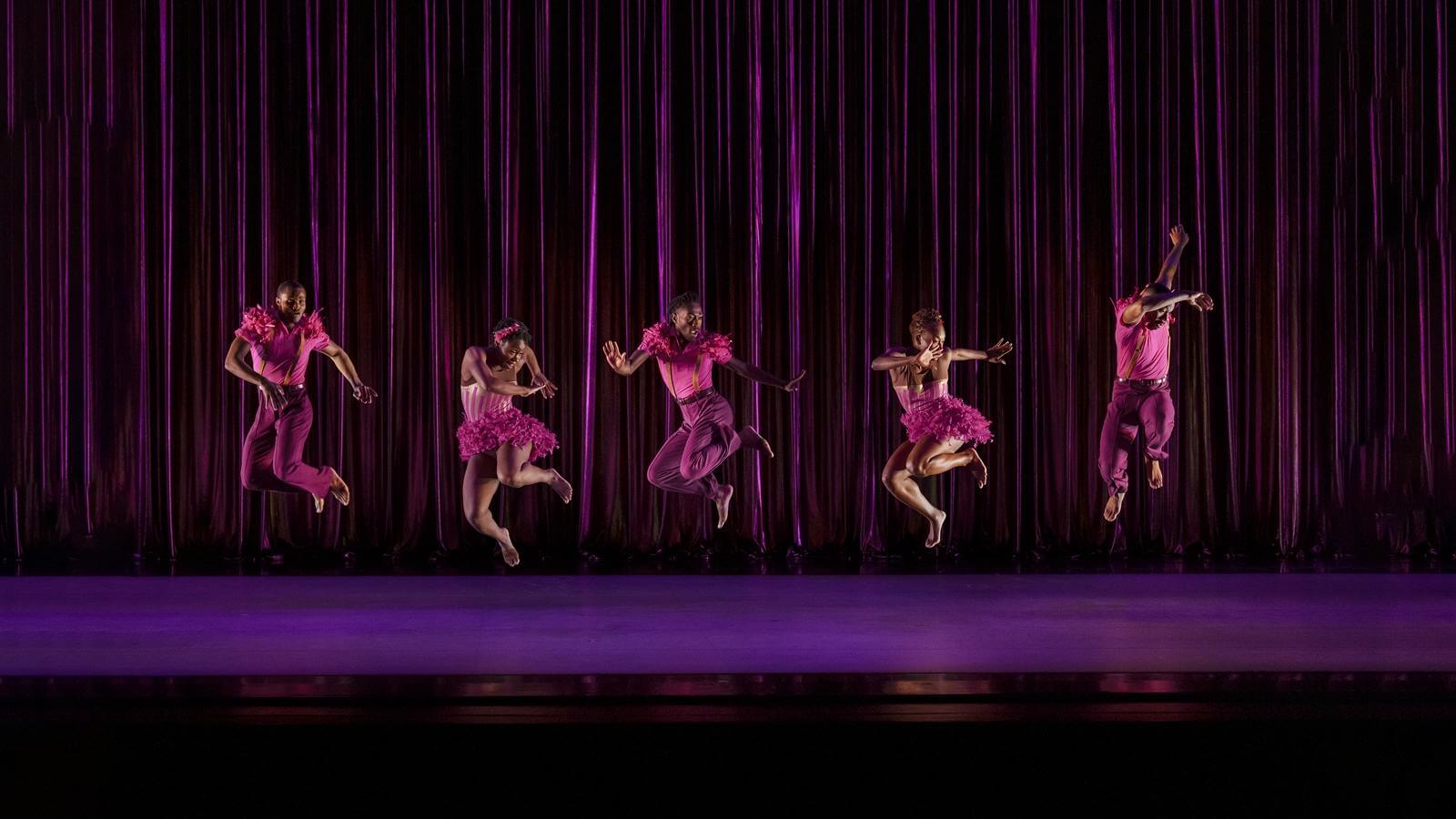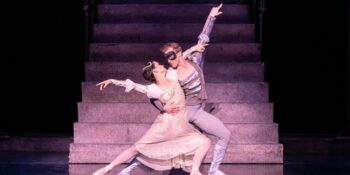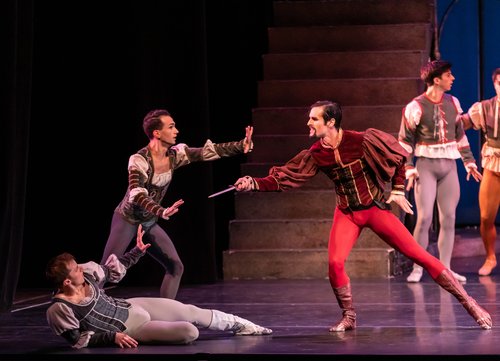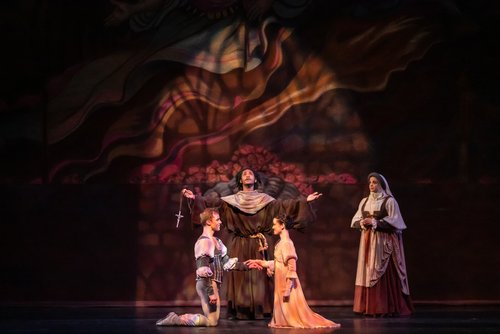The MCR Interview
Fall Dance Director Rebekah Hampton Barger on Dance, Chronic Pain and Her Collaboration with Chatterbird
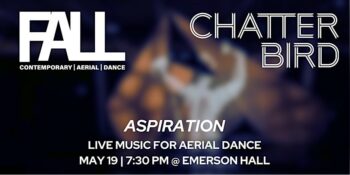
Rebekah Hampton Barger is the Founder and Artistic Director of Nashville-based aerial and contemporary ballet company Fall. She recently zoomed with MCR journalist Bethany Morgan regarding her work, and approaching collaboration with Chatterbird. The following is a recording of that conversation (please like, subscribe, and share!):
LATINO EN NASHVILLE, May, 2024

(English version here)
Este mes de mayo la música latina se viene en modo: ¡celebración! La “generación Y” será inmensamente complacida con los clásicos del Rock en español y del vallenato. Nuevamente los ritmos tropicales reunirán en la pista los movimientos desinhibidos de todo aquel que se rinda ante el repique de las congas.
GIOVANNI RODRÍGUEZ & 12 MANOS 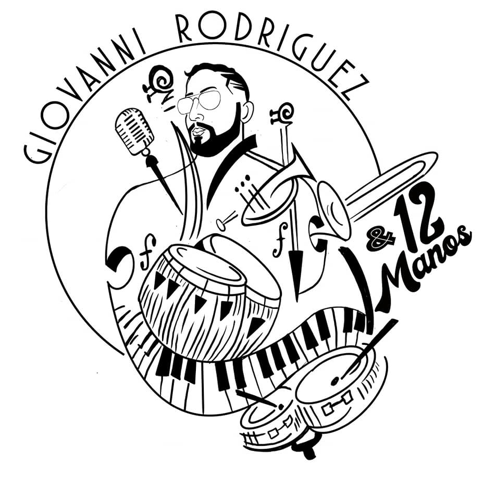
Rudy’s Jazz Room
Todos los lunes
9:00 PM
Entradas $19.44+
Cada lunes del mes en Rudy’s Jazz Room al caer la noche se despierta el sol caribeño con el repique de las congas. Giovanni Rodríguez, un artista integral de sangre dominicana y radicado en Nashville, es el director de este proyecto que cuenta también con destacados músicos en la escena musical de la ciudad. Para este evento, el recinto dispone de una pista de baile para vibrar con los ritmos coloridos de la salsa, la bachata y el jazz latino.
DANIEL CALDERÓN Y LOS GIGANTES DEL VALLENATO (Colombia)
Diamante Night Club
Jueves 9 de mayo
11:00 PM
Entradas: $40+
Como parte de su gira por los Estados Unidos, la agrupación Los Gigantes del Vallenato dirigida por su vocalista Daniel Calderón, acompañarán la celebración del Día de la Madre en uno de los clubes nocturnos latinos más reconocidos de la ciudad. Los asistentes podrán corear los inolvidables éxitos del vallenato en los que se destacan Infiel, Cómo Te Atreves, Después del Adiós y Aventura. Las puertas estarán abiertas a partir de las 9:00PM y el show comenzará a las 11:00PM.
LOS INQUIETOS DEL VALLENATO (Colombia) 
Plaza Mariachi
Viernes 10 de mayo
9:00 PM – 1:00 AM
Entradas $60+
Nelson Velásquez y Emerson Plata han logrado consolidar esta agrupación durante los últimos 25 años como una de las más representativas del país en el género del vallenato. La música de Los Inquietos está siempre presente en las parrandas vallenatas, sobre todo cuando la fiesta se torna romántica. Su primer éxito Volver ha resonado en toda la esfera sirviendo de embajador de este ritmo auténtico colombiano que invade de alegría y nostalgia. El día de la madre es la fecha perfecta para acompañar esta celebración con canciones que inevitablemente traerán a la memoria la sencillez del día a día con la radio encendida.
FM DE ZACAPA Y LA MARIMBA ORQUESTA LA GRAN MANZANA (Guatemala) 
Plaza Mariachi
Viernes 10 de mayo
9:00 PM – 2:00 AM
Entradas $50
Al son de los ritmos tradicionales de Guatemala FM de Zacapa y La Marimba Orquesta La Gran Manzana deleitarán a las madres en su día, con una noche de cumbia, marimba y baile. El sonido versátil de estas dos agrupaciones está en su mezcla de folklor y arreglos contemporáneos. El público de cualquier nacionalidad podrá disfrutar de una alegre celebración que combina los timbres del caribe con la profundidad de los teclados amaderados.
LA FACTORÍA (Panamá)
Bucanas
Viernes 10 de mayo
9:00 PM
Entradas $35+
No había rumba o miniteca en la década de los 2000 donde no se bailaran los pegajosos éxitos Todavía y Que Me Maten de La Factoría. El estilo fresco y romántico del reggaetón y el género urbano de esta agrupación, la hizo merecedora de varios premios incluido un disco de oro y más de 200.000 copias vendidas con su álbum debut. Actualmente su vocalista ha mantenido el legado de esta agrupación bajo el nombre artístico de Demphra.
NOW! THAT’S WHAT I CALL A LATIN NIGHT! A BAD BUNNY AFTERPARTY 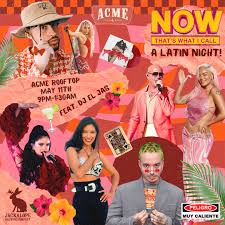
Acme Feed and Seed
Viernes 11 de mayo
9:00 PM – 1:30 AM
Entrada libre
Para no dejar morir la noche luego de un concierto lleno de ritmo y energía con uno de los artistas más reproducidos del momento, Acme Feed and Seed tiene preparado un evento sin precedentes con la música crossover de DJ El Jas y cocteles temáticos para la ocasión. Sumérgete en la atmósfera latina mientras vibras al ritmo de los éxitos más calientes del reggaetón y el trap.
LA SONORA DINAMITA (Colombia)
LOS KUMBIA BROTHERZ (México)
Plaza Mariachi
Domingo 12 de mayo
9:30 PM – 11:00 PM
Entradas $10
Para completar este fin de semana de celebración, qué mejor que una noche bailable al ritmo de la cumbia. Desde Cartagena llega la Sonora Dinamita, una reconocida agrupación con más de 60 años de carrera y su sello auténtico de la cumbia colombiana. Originarios de México y radicados en Memphis, Los Kumbia Brotherz se unirán a esta rumba con el tradicional sonido del güiro y el teclado eléctrico.
VILMA PALMA E VAMPIROS (Argentina)
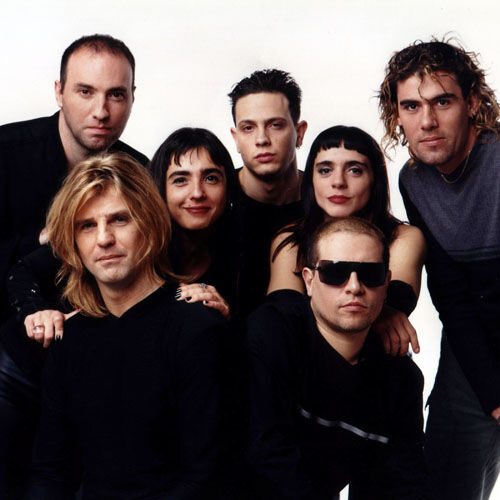
ELEFANTE (México)
Bucanas
Viernes 17 de mayo
9:00 PM
Entradas $65+
El rock y el pop latino llegan a Nashville en una combinación explosiva de dos reconocidas bandas de los 90’ que con sus éxitos dejaron una huella imborrable en la juventud de esa generación. Las letras divertidas y escuetas de Vilma Palma E Vampiros se escuchaban a todo volumen como símbolo de rebeldía. Por otro lado, Elefante más romántico y profundo no escatimaba en versos para desahogarse. El estilo de estas dos agrupaciones fue trasformando la balada latina con un golpe más urbano y atractivo para permanecer latente en una audiencia de afición rockera.
CHIMBALA
Ibiza Louge Nashville
Sábado 18 de mayo
9:00 PM
Entradas $50+
La fusión entre la música urbana y el deambow, han posicionado la carrera de Chimbala como uno de los artistas más influyentes en la escena dominicana y del continente. Éxitos como Maniquí, El Boom, y Tumbala, superan los 60 millones de vistas en Youtube y han liderado la lista Latin Airplay de los Billboard. En el 2021 y 2022 recibe la certificación de la RIAA en triple platino, platino y oro por el éxito de sus sencillos Loco y Wow BB.
SUNDAY FIESTA 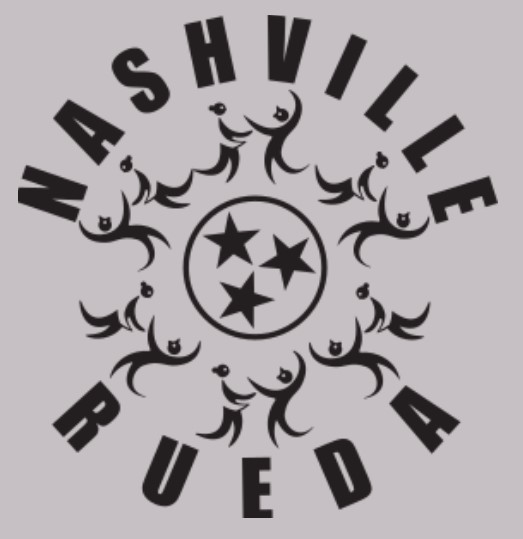
Hotel Preston
Domingo 26 de mayo
2:00 PM – 6:00 PM
Donación $5+
El proyecto Nashville Rueda que promueve las danzas cubanas a través de presentaciones y clases para todas las edades y niveles, será el anfitrión del “Sunday Fiesta.” Esta celebración tropical convoca a todos los amantes de la salsa, la bachata y la timba para que disfruten del baile con su familia y sus amigos. Para asistir no es necesario ser un experto bailarín, sin embargo, de 2:00 a 2:30 PM se dará una lección gratuita con los pasos básicos de cada ritmo. Además de la música y la danza, Blackwood Restaurant tendrá servicio completo de comidas y bebidas durante todo el evento.
ALEX MANGA (Colombia)
Diamante Night Club
Viernes 31 de mayo
11:00 PM
Entradas $40+
Para cerrar el mes de las Madres, el reconocido cantante del vallenato Alex Manga, encenderá de nuevo la nostalgia de sus seguidores con canciones como A pesar de Todo y Déjala. Luego de participar en agrupaciones como Dinastía Vallenata y Los Diablitos, Alex Manga en su carrera en solitario ha preservado el sonido tradicional del género con su cálida cadencia vallenata. Las puertas estarán abiertas a partir de las 9:00PM y el show comenzará a las 11:00PM.
LATINO EN NASHVILLE, May, 2024

(Versión en español aquí)
This May, Latin music comes in celebration mode! The “Gen Y” will be immensely pleased with the classics of Latin rock and vallenato. Once again, tropical rhythms will bring together the uninhibited moves of anyone who surrenders to the beat of the congas.
GIOVANNI RODRÍGUEZ & 12 MANOS 
Rudy’s Jazz Room
Every Monday
9:00 PM
Tickets $19.44+
Every Monday night at Rudy’s Jazz Room, the Caribbean sun awakens with the beat of the congas. Giovanni Rodríguez, a versatile artist of Dominican descent based in Nashville, leads this project featuring prominent musicians from the city’s music scene. The venue offers a dance floor to groove to the colorful rhythms of salsa, bachata, and Latin jazz.
DANIEL CALDERÓN Y LOS GIGANTES DEL VALLENATO (Colombia)
Diamante Night Club
Thursday, May 9th
11:00 PM
Tickets: $40+
As part of their tour in the United States, the Los Gigantes del Vallenato group led by vocalist Daniel Calderón, will accompany the Mother’s Day celebration at one of the city’s most recognized Latin nightclubs. Attendees can sing along to unforgettable vallenato hits such as “Infiel,” “Cómo Te Atreves,” “Después del Adiós,” and “Aventura.” Doors open at 9:00 PM and the show starts at 11:00 PM.
LOS INQUIETOS DEL VALLENATO (Colombia) 
Plaza Mariachi
Friday, May 10th
9:00 PM – 1:00 AM
Tickets $60+
Nelson Velásquez and Emerson Plata have managed to consolidate this group over the past 25 years as one of the country’s most representative in the vallenato genre. The music of Los Inquietos is always present at parrandas vallenatas, especially when the party becomes romantic. Their first hit “Volver” has resonated throughout the sphere, as an ambassador of this authentic Colombian rhythm that brings joy and nostalgia. Mother’s Day is the perfect date to accompany this celebration with songs that will inevitably bring to mind the simplicity of everyday life with the radio on.
FMZACAPA AND LA MARIMBA ORQUESTA LA GRAN MANZANA (Guatemala) 
Plaza Mariachi
Friday, May 10th
9:00 PM – 2:00 AM
Tickets $50
To the traditional rhythms of Guatemala, FM de Zacapa and La Marimba Orquesta La Gran Manzana will delight mothers with a night of cumbia, marimba, and dancing. The versatile sound of these two groups lies in their blend of folklore and contemporary arrangements. Audiences of any nationality can enjoy a joyful celebration combining Caribbean tones with wooden keyboards’ depth.
LA FACTORÍA (Panama)
Bucanas
Friday, May 10th
9:00 PM
Tickets $35+
There wasn’t a party or miniteca in the 2000s where young people didn’t dance to the catchy hits “Todavía” and “Que Me Maten” by La Factoría. This group’s fresh and romantic style of reggaeton and urban genre earned them several awards including a gold record and over 200,000 copies sold with their debut album. Currently, their vocalist has kept the legacy of this group under the artistic name Demphra.
NOW! THAT’S WHAT I CALL A LATIN NIGHT! A BAD BUNNY AFTERPARTY 
Acme Feed and Seed
Friday, May 11th
9:00 PM – 1:30 AM
Free
To keep the night alive after a concert full of rhythm and energy with one of the most-streamed artists of the moment, Acme Feed and Seed has prepared an unprecedented event with DJ El Jas’ crossover music and themed cocktails for the occasion. Immerse yourself in the Latin atmosphere as you groove to the hottest reggaeton and trap hits.
LA SONORA DINAMITA (Colombia)
LOS KUMBIA BROTHERZ (Mexico)
Plaza Mariachi
Sunday, May 12th
9:30 PM – 11:00 PM
Tickets $10
To complete this weekend of celebration, what better than a dance night to the rhythm of cumbia. From Cartagena comes La Sonora Dinamita, a renowned group with over 60 years of career and its authentic stamp of Colombian cumbia. Originally from Mexico and based in Memphis, Los Kumbia Brotherz will join this party with the traditional sound of the güiro and the electric keyboard.
VILMA PALMA E VAMPIROS (Argentina)

ELEFANTE (Mexico)
Bucanas
Friday, May 17th
9:00 PM
Tickets $65+
Latin rock and pop arrive in Nashville in an explosive combination of two renowned bands from the 90s who left an indelible mark on the youth of that generation with their hits. The fun and succinct lyrics of Vilma Palma E Vampiros were heard at full volume as a symbol of rebellion. On the other hand, Elefante, more romantic and profound, didn’t skimp on verses to vent. The style of these two groups transformed Latin ballads with a more urban and appealing touch to remain latent in a rock-loving audience.
CHIMBALA
Ibiza Lounge Nashville
Saturday, May 18th
9:00 PM
Tickets $50+
The fusion of urban music and deambow has positioned Chimbala’s career as one of the most influential artists in the Dominican and continental scene. Hits like “Maniquí,” “El Boom,” and “Tumbala” have surpassed 60 million views on YouTube and have topped the Latin Airplay chart on Billboard. In 2021 and 2022, he received RIAA certification in triple platinum, platinum, and gold for the success of his singles “Loco” and “Wow BB.”
SUNDAY FIESTA 
Hotel Preston
Sunday, May 26th
2:00 PM – 6:00 PM
Donation $5+
The Nashville Rueda project, which promotes Cuban dances through performances and classes for all ages and levels, will host the “Sunday Fiesta.” This tropical celebration invites all lovers of salsa, bachata, and timba to enjoy dancing with their family and friends. To attend, it is not necessary to be an expert dancer, however, from 2:00 to 2:30 PM there will be a free lesson with the basic steps of each rhythm. In addition to music and dance, Blackwood Restaurant will have full food and beverage service throughout the event.
ALEX MANGA (Colombia)
Diamante Night Club
Friday, May 31st
11:00 PM
Tickets $40+
To close out Mother’s Month, renowned vallenato singer Alex Manga will once again evoke nostalgia with songs like “A Pesar de Todo” and “Déjala.” After participating in groups like Dinastía Vallenata and Los Diablitos, Alex Manga’s solo career has preserved the traditional sound of the genre with his warm vallenato cadence. Doors open at 9:00 PM and the show starts at 11:00 PM.


